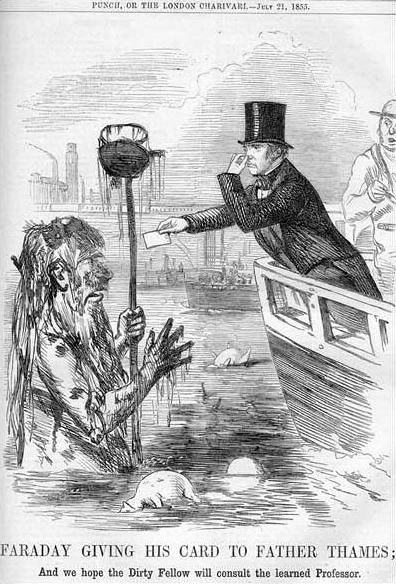Diseases in industrial cities in the Industrial Revolution
Disease in urban areas was a significant problem. Unsanitary housing, overcrowding and poor drainage systems contributed to the spread of disease. Epidemics of typhus, cholera and typhoid were common. It was not until the mid-19th century that the issue of public health was fully addressed.
The disease that most people feared was cholera. Because it stemmed from poor quality water, the disease could spread quickly. Outbreaks of cholera occurred in Britain in 1831, 1848, 1854 and 1867 - it was usually the result of sewage mixing with drinking water. Because the river was the main source of drinking water for most towns, the disease would spread at pace.
Cholera causes violent vomiting and diarrhea, and it carried a 50 per cent death rate. During the outbreak of 1848-49, 15,000 people died in London alone. Although the rich were also affected by the disease, it tended to be more prevalent among the poorer members of society.

Another common issue in industrial cities was smallpox, despite the fact that a vaccine had been developed by Edward Jenner at the beginning of the 19th century. The fact that cities were tightly packed meant the disease could spread easily.
Other major health issues were the diseases typhoid and typhus, which were both fairly common in the Industrial Revolution. Typhus was carried by lice while typhoid was was found in infected water.
Despite all of these disease, tuberculosis (TB) was the biggest killer in the cities. TB attacks the body’s lungs and as a result the organs produces what are known as tubercles, which in turn become spongy and yellow - the infected person breaks into fits of coughing in an attempt to spit out the tubercles.
It was usually the malnourished that were struck down by TB, although it did also affect people in damp and dirty homes. The disease can be spread by the sputum of someone who already has the disease, which is then inhaled by someone else. Again, the fact that cities were overcrowded made them the perfect environment for the spread of the disease.
The records, although hard to come by, suggest that TB accounted for a third of death between 1800 and 1850 in Britain.
Louis Pasteur first discovered microbes in 1864. Up until this time there were a number of theories about what caused diseases. One such belief, which dated back to Medieval England, claimed disease was spread by bad smells and invisible poisonous clouds (miasmas). Few people suspected that polluted water supplies could be the cause.
When a typhoid outbreak blighted Croydon in 1852, the local Board of Health tried to find the bad smell it believed would be the cause, whereas in reality the outbreak was caused by sewage contaminated the town’s water supply.
John Snow, an English physician, was one of the first sceptics of the miasma theory. His observation of the evidence led him to discount the theory of foul air. He published his investigation into the role of the water supply in the Soho epidemic of 1854, in which he identified the source of the epidemic as a public water pump.
The Public Health Act was passed in 1875 thanks to efforts from reformers like Dr Thomas Smith and Edwin Chadwick. It required all new housing to include running water and an internal drainage system; prohibited the construction of shoddy housing and ensured that every public health authority had a medical officer and sanitary inspector.
See also Are We Wrong About Smallpox blog post.
MLA Citation/Reference
"Diseases in industrial cities in the Industrial Revolution". HistoryLearning.com. 2026. Web.
